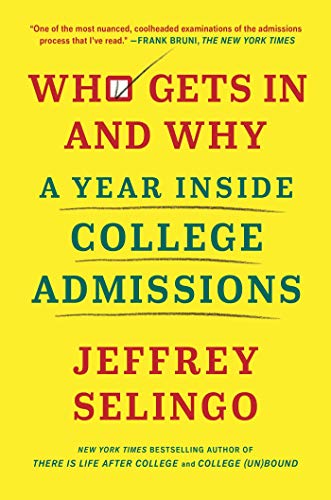
College admissions is a tradition-bound process—an annual cycle that institutions follow in lock-step with direct mail, campus tours, and a common set of deadlines. But the global pandemic that is now a year old has upended those traditions. Campuses are closed for visits by prospective students, hundreds of colleges have made standardized tests optional for applicants, and high schools have canceled activities that form a chunk of a senior’s college application.
But what COVID-19 perhaps also shows is that some of those traditions are broken and should be retired forever.
One thing I learned about college admissions during the year I spent inside the process reporting my new book is that admissions is often a mix of art and science when choosing a class. But in the last decade-plus, college admissions offices that were traditionally managed by experience and gut instinct, are now driven by spreadsheets and dashboards operated by leaders who grew up in the era of Moneyball.
Just like baseball teams manage their roster by analyzing statistics to make decisions, admissions deans are playing with increasingly sophisticated “enrollment management” models to build each incoming class. This sea of numbers tells admissions officers who is most interested in the school, who will enroll if accepted, and even how much financial aid it will take to attract them.
Take demonstrated interest as an example. It’s one of those jargony terms describing what has become an important metric to colleges. Colleges measure how interested someone really is in them as they wade through rising numbers of applications. Their thinking is why admit applicants—and risk looking less selective—if they’re planning to go elsewhere anyway? So, colleges check to see if students have opened emails, send them tracking links so they can follow their movements on a college’s website, and know if students have come to campus for tours (or Zoom sessions this year).
Measuring demonstrated interest is even more important this year as brand-name colleges and big public universities saw a surge in applications. Given test-optional policies and the inability to get to campuses, students hedged their bets and applied to more colleges—a lot more of them.
Now colleges are left scrambling to figure out who is likely to come if admitted. As a result, many are also playing with another tool of the modern enrollment management toolbox: the wait list. Admissions deans often factor the wait list into their enrollment models, admitting fewer students knowing they’ll likely pull at least a few off the wait list. That way they don’t need to officially admit more students up front and look less selective.
While colleges get to figure out if students are really interested in them or put them in a holding pattern, applicants don’t have such clarity in a process that is a black box to them. The admissions process has always been a one-sided affair with colleges holding more of the cards; this year it promises to be even worse with the specter of the pandemic.
So, maybe this is the perfect time to rethink some of the traditions of admissions.
One urgent need is to reduce the influence of binding early decision, or eliminate it altogether, so that teenagers aren’t locked into a college decision barely a few months into their senior year. Early decision rushes a process that should be a journey of discovery and reflection for teenagers and their families. Early decision leaves students with the impression that there’s only one right college for them.
Schools should also bring more transparency to the process. Here’s one idea: a national clearinghouse created by colleges or another entity, such as the U.S. Department of Education. Colleges could disclose what they’re looking for. That way, students and their families can see if a specific college they’re considering is, say, looking for students from Southern California, or from five specific zip codes in Florida, or for students who want to major in history, or for those interested in Catholic colleges. At the same time, students could list the other colleges on their search list and the places where they eventually apply. It wouldn’t be a matching system, per se, but it would bring more clarity to the process.
Finally, colleges should focus on what really matters in the application. Schools typically know that two basic measures indicate whether students will succeed on their campuses: high school courses and grades. Yet every year they ask for a list of ten activities and essays and recommendations. This year, colleges are getting less in applications—including fewer test scores—allowing them to figure out what really matters. When the pandemic is over, my hope is that admissions officers will take a close look at what they could ditch in the application because it’s just noise rather than a strong signal of a student’s potential.
The pandemic offers colleges an opportunity to make their selection process more efficient for them and provide more clarity to applicants. Let’s not waste the chance to lower the collective anxiety level of families about this rite-of-passage.
______________________________________________________________________________________________________________________







